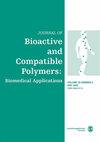菊苣的绿色合成壳聚糖纳米颗粒及其抗真菌、抗溶血和抗癌活性的评价
IF 2.1
4区 生物学
Q3 BIOTECHNOLOGY & APPLIED MICROBIOLOGY
引用次数: 3
摘要
菊苣(chicicorium intybus L.)是世界上许多地区广泛食用的一种食用植物,由于其独特的植物化学成分,已被用于传统医学。研究菊苣根、叶乙醇提取物及其壳聚糖纳米颗粒(Chit NPs)的抗真菌、抗溶血和抗癌活性。将菊苣根和菊苣叶的乙醇提取物微囊化成Chit NPs。研究了菊苣提取物及其Chit-NPs的抗溶血、抗真菌和抗癌活性,并进行了体外毒理学研究。菊苣提取物包埋在Chit NPs中,对白色念珠菌和黄曲霉的抗真菌活性增强。菊苣提取物及其Chit NPs在低渗介质中表现出较强的抗溶血活性。根和叶提取物被微胶囊化后,HepG2和MCF-7细胞株的IC50分别降低了2.49倍和2.6倍,HepG2和MCF-7细胞株的IC50分别降低了6.31倍和5.50倍。体外毒理学研究表明,菊苣根(56.84±6.4 μg/ml)和叶片(45.51±4.2 μg/ml)对正常人成纤维细胞(WI38)的IC50比阿霉素(6.72±0.5 μg/ml)分别降低8.45倍和6.77倍。将提取物微胶囊化后,其对甜菜根NPs的毒性提高2.43倍(IC50 = 23.35±2.3 μg/ml),对甜菜叶NPs的毒性提高1.22倍(IC50 = 37.29±2.9 μg/ml)。菊苣NPs具有良好的抗癌和抗溶血活性。值得在临床前动物模型和临床试验中进一步验证其有效性和毒性。本文章由计算机程序翻译,如有差异,请以英文原文为准。
Green synthesis of chicory (Cichorium intybus L.) Chitosan nanoparticles and evaluation of their anti-fungal, anti-hemolytic, and anti-cancer activities
Chicory (Cichorium intybus L.) is widely consumed as a food plant in many regions of the world and has been involved in traditional medicine due to its unique contents of phytochemicals. We aimed to investigate the anti-fungal, anti-hemolytic, and anti-cancer activities of chicory roots and leaves ethanolic extracts, and their Chitosan nanoparticles (Chit NPs) formulations. The ethanolic extract of chicory roots and leaves were microencapsulated into Chit NPs. The anti-hemolytic, anti-fungal, and anti-cancer activity of chicory extracts and their Chit-NPs were investigated, along with an in vitro toxicological study. Chicory extracts encapsulation into Chit NPs increased their anti-fungal activity against two fungal pathogens, Candida albicans and Aspergillus flavus. Chicory extracts and their Chit NPs appeared strong anti-hemolytic activity in hypotonic media. Due to microencapsulation of roots and leaves extracts into Chit NPs, the IC50 was decreased 2.49 and 2.6-folds in HepG2 and MCF-7 cell lines, and 6.31 and 5.50-folds in HepG2 and MCF-7 cell lines, respectively. The in vitro toxicological study revealed that the IC50 of chicory roots (56.84 ± 6.4 μg/ml) and leaves (45.51 ± 4.2 μg/ml) decreased 8.45 and 6.77-folds in the normal human fibroblasts (WI38) cell line, compared to Doxorubicin (6.72 ± 0.5 μg/ml). Microencapsulation of extracts into Chit NPs increased their toxicity 2.43-folds for Chit-Roots NPs (IC50 = 23.35 ± 2.3 μg/ml) and 1.22-fold for Chit-Leaves NPs (IC50 = 37.29 ± 2.9 μg/ml). Chicory-Chit NPs possess promising anti-cancer and anti-hemolytic activities. It is worth for further testing their efficacy and toxicity in pre-clinical animal models as well as clinical trials.
求助全文
通过发布文献求助,成功后即可免费获取论文全文。
去求助
来源期刊

Journal of Bioactive and Compatible Polymers
工程技术-材料科学:生物材料
CiteScore
3.50
自引率
0.00%
发文量
27
审稿时长
2 months
期刊介绍:
The use and importance of biomedical polymers, especially in pharmacology, is growing rapidly. The Journal of Bioactive and Compatible Polymers is a fully peer-reviewed scholarly journal that provides biomedical polymer scientists and researchers with new information on important advances in this field. Examples of specific areas of interest to the journal include: polymeric drugs and drug design; polymeric functionalization and structures related to biological activity or compatibility; natural polymer modification to achieve specific biological activity or compatibility; enzyme modelling by polymers; membranes for biological use; liposome stabilization and cell modeling. This journal is a member of the Committee on Publication Ethics (COPE).
 求助内容:
求助内容: 应助结果提醒方式:
应助结果提醒方式:


